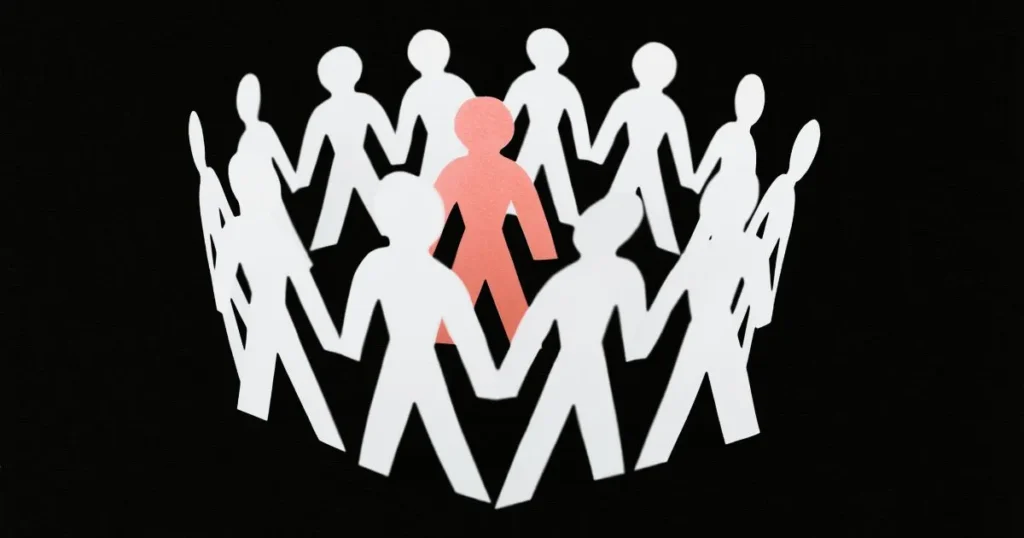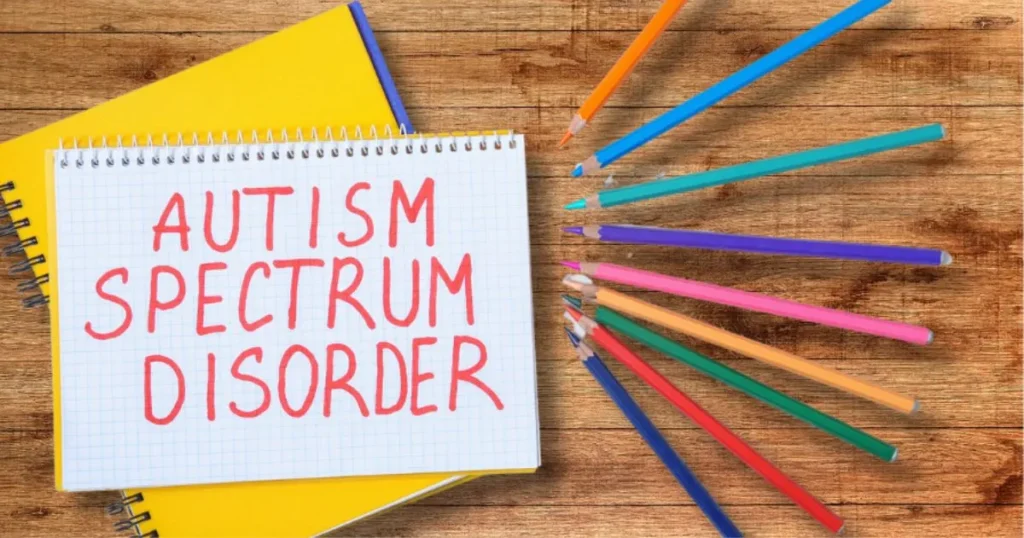Have you ever caught yourself pondering some stereotypical questions about Autism Spectrum Disorder (ASD), such as “Do people with ASD not understand the concept of humor and jokes?” or “Is a meltdown always a tantrum?”, or even “You look okay, but you have autism? You don’t look like it!”. These common misconceptions often shape our understanding of ASD, and it’s about time we change that by having engaging and meaningful conversations on this topic.
In my journey to learning more about ASD, I’ve always found myself drawn to TV series that explore the world of autism. Some of my Netflix favorites include “Atypical,” which focuses on an 18-year-old boy on the autism spectrum seeking independence while cherishing his love for penguins. Then there’s “The Good Doctor” which showcases an exceptionally talented young surgeon with autism and savant syndrome, and the captivating Korean drama “Extraordinary Attorney Woo“, telling the story of an autistic lawyer raised by her single father. These shows not only expand our understanding of ASD but also challenge societal misconceptions. They humanize the people with ASD, allowing us to connect with them on a deeper level. Their storylines offer a fresh, engaging, and authentic look into the lives of those affected by ASD.
In this article, We’ll explore the unique traits and strengths of individuals with Autism Spectrum Disorders, bust common myths, and highlight the importance of accepting and celebrating neurodiversity.
I. Breaking the Spectrum Barrier: Debunking Myth About Autism
One common notion we must navigate away from is the idea that Autism Spectrum Disorders (ASD) fit into a “one-size-fits-all” box. To put it plainly, ASD is not a single disorder, but a spectrum of closely related disorders that share a core of symptoms. People with autism might have trouble with social interaction, understanding others, and being flexible in certain situations. But, we need to know that these challenges vary significantly among individuals with the condition.
Embracing the Rainbow Analogy: A World of Diverse Traits and Experiences

To understand ASD’s complexity and variety, visualize it as a rainbow. Each color represents a unique combination of traits and experiences within the autism spectrum. This vibrant metaphor helps us appreciate how vastly different people with ASD can navigate life.
Take, for example, the main character Sam from the popular TV series Atypical. Sam’s experience of autism is only one of the numerous shades within the spectrum. Through Sam, the show highlights both the challenges and strengths of living with autism while reminding viewers that there are countless other stories waiting to be told.
Challenging Outdated Terminology: Advocating for Inclusive Language
To respect the diversity within the autism community, we should strive to adopt alternative terms like “neurodivergent” and “differently-abled” that honor unique abilities and experiences without the stigma attached to terms like “disorder.”
By shifting our language, we can move towards a more inclusive and understanding society that cherishes the strengths that people with ASD bring to the table. By debunking myths and changing our wrong perspective of people with ASD, we can foster understanding, acceptance, and appreciation for each individual.
II. Strengths Beyond the Spotlight: The Exceptional Abilities Within Autistic Spectrum Disorders
It’s easy to get caught in the dialogue surrounding the challenges associated with Autism Spectrum Disorder (ASD). Areas of difficulty, such as social communication and sensory sensitivities, often hog the spotlight. But to really understand and appreciate ASD, we need to acknowledge the exceptional strengths this spectrum has. Individuals with ASD are just as diverse as the abilities they possess. In many cases, you’ll find an incredible knack for detail-oriented thinking, creative problem-solving, and an extraordinary ability to focus that most of us can only aspire to.
The Many Gifts of Autism Spectrum Disorder
For instance, many on the autism spectrum have prodigious rote memory skills. They can remember facts, figures, and details most of us wouldn’t give a second glance. This propensity for precision and a keen eye for detail could excel beyond expectation in certain roles or tasks.
Remember Murphy from “The Good Doctor”? His unique ability to absorb details paints a picture of what people with ASD can achieve in reality.
Autism Spectrum Disorder’s Hall of Fame: Stories of Success
The narrative surrounding ASD becomes even more inspiring when we know real-life individuals with autism who’ve achieved remarkable heights. Consider, for instance, eminent personalities like Isaac Newton and Albert Einstein, suspected to be on the autistic spectrum. Their extraordinary contributions to science are a testament to the incredible potential of individuals with ASD.
The Power of Self-Reflection: In Strengths We Trust
Being curious to these incredible stories should prompt us all to have a moment for self-reflection. No matter who we are or where we come from, each of us possesses a unique set of strengths. The key is to recognize strengths and use them to our advantage in both professional and personal areas.
III. Sensory Symphony: Understanding a Different Tune
Autism Spectrum Disorder (ASD) often come with unique sensory sensitivities, painting the world in a different light – sometimes literally. That gentle sunlight which we all bask in? It might be harshly blinding for someone on the spectrum. The gentle hum of a computer in a quiet room that we hardly notice? To a person with ASD, it might sound like a drumming concert.
The sensory world is different for individuals with ASD, covering all senses: sight, sound, touch, taste, and smell. It has a lot to do with the behavioral, information processing, and sensory aspects tied to their diagnosis. That’s why many on the autism spectrum often prefer familiar environments with a predictable routine. Picture it like this – once you’ve found the right station on the radio with unpredictable reception, wouldn’t you want to stick with that clarity instead of diving back into static fuzz?
Creating Sensory Safe Havens: Constructing Comfort
An unfamiliar environment can be overwhelming for someone with ASD – but we can help ease that discomfort. By understanding their sensory needs, we can create sensory-friendly environments that are empathetic and considerate. Need some practical tips and strategies? Just look around you!
From using soft, dimmable lighting instead of harsh fluorescents, incorporating soft textures in furniture, reducing ambient noise, or maintaining moderated room temperatures – these small changes can make a big difference.
Let’s take an example from my personal endeavors. As an avid pet owner who’s known her share of skittish furballs, I’ve noticed definite similarities. Animals, much like individuals with ASD, can be incredibly sensitive to their environments. Once, I had a particularly nervous dog who’d run and hide at loud noises. Simply maintaining a quiet and predictable environment worked wonders in helping her feel secure and peaceful. Thinking about those experiences, it isn’t surprising that a shift in our sensory environment can create comfort spaces not just for pets, but for those with ASD as well.
Beyond Accommodation: The Call for Inclusion
While it’s essential to support individuals on the spectrum, we must take it a step further – let’s move beyond mere accommodation to inclusion. It’s about creating inclusive designs that take into account the sensory needs of everyone and not just individuals with ASD.
Inclusive designs go beyond just physical spaces; it’s about developing an understanding, forming structured support mechanisms, and generating awareness amongst our peers. And remember, the world is a richer place when we make room for everyone.
IV. Celebrating Neurodiversity (Embracing Differences):

Embracing diversity can help create a stronger community that benefits us all. By acknowledging neurodiversity, we can appreciate and value the unique strengths of each individual, leading to greater innovation, creativity, and problem-solving abilities. As people with different perspectives and cognitive abilities work together, society can solve complex problems and achieve greater success.
So, We must learn more about ASD and join the movement toward acceptance and understanding. It is important to educate ourselves about different perspectives, which helps build trust and foster inclusivity. The knowledge and compassion acquired through exploring neurodiversity is something worth sharing.
Conclusion:
As we learn and understand more about autism, it’s essential to remember that it is not a boundary, but a different perspective of viewing the world. It’s a different kind of experiences, abilities, and perspectives that enrich our society and offer new ways of thinking and problem-solving. Our understanding of autism may be challenging, but it’s always worthy of our time and effort. It invites us to learn, empathize, and celebrate the distinct colors that paint the spectrum of human cognition.
We encourage you to join online communities, such as Facebook groups, or visit the autistic support network website. These platforms offer first-hand experiences, valuable resources, and a chance to contribute to a supportive community advocating for the cause. Through our shared efforts, we can ensure that each spectrum is not merely seen but also appreciated and celebrated.
Stay tuned to our blogs for more articles on other interesting topics. And remember, in understanding and celebrating neurodiversity, we paint a more vibrant picture of what it means to be human.


Pingback: Pros and Cons of AI: Weighing the Impact on Our Lives - SMIAT